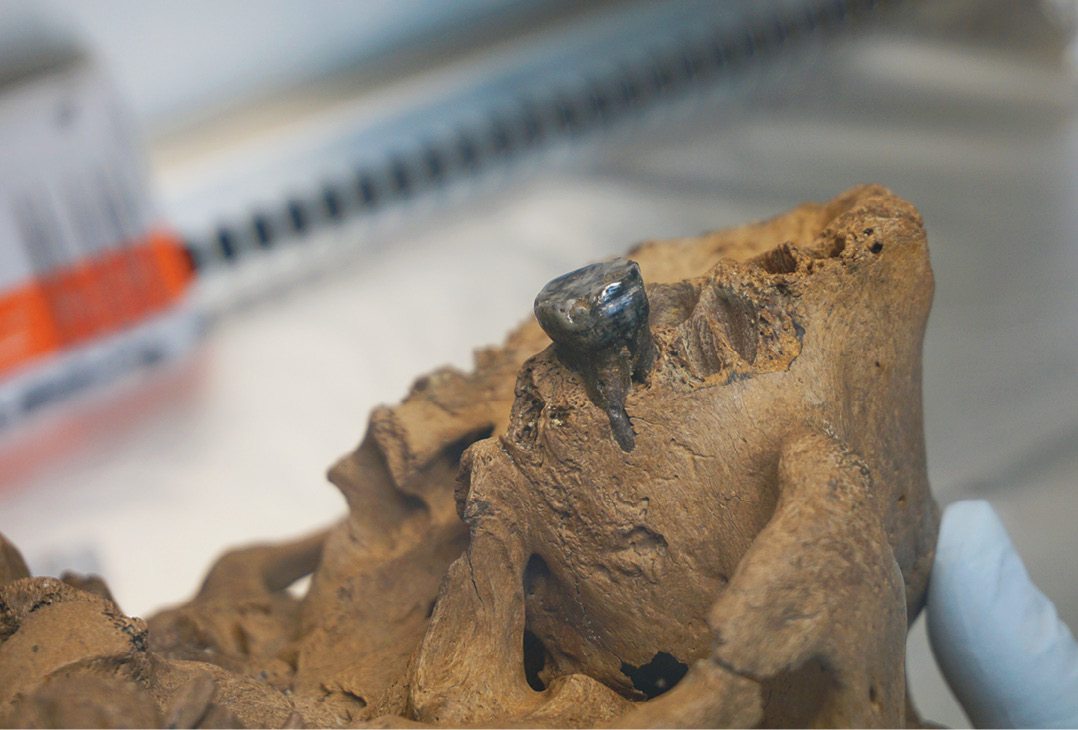Subscribe now for full access and no adverts
New analysis of a hominin skull previously believed to represent a new species of ancient human suggests that it may in fact be a Denisovan.
The Denisovans were first discovered in 2010, when ancient DNA from a finger bone in Denisova Cave, Siberia, revealed it to belong to a previously unknown ancient hominin that shared a common ancestor with Neanderthals. Over the last 15 years, several more fragmentary Denisovan remains have been found, while other studies have discovered evidence of their genetic legacy in the DNA of modern populations in Asia and the Pacific. However, the Denisovan fossil record remains extremely limited, which means that little is known about their physical appearance.
This may be about to change thanks to new research on a cranium from Harbin, north-east China, which was initially unearthed in the 1930s, before being rediscovered in 2018. The skull is at least 146,000 years old and displays a combination of primitive and modern human characteristics, with a long and low braincase, flat cheeks, a broad mouth, an imposing brow, and a brain c.7% larger than the average present-day human. It was therefore proposed in 2021 that this individual should be recognised as a new species and given the name Homo longi (‘Dragon Man’) after the find spot, Long Jiang or ‘Dragon River’ (CWA 109). However, the specimen’s taxonomic affiliation remained a subject of controversy.
The latest analysis of the skull was carried out by a team led by Qiaomei Fu at the Institute of Vertebrate Paleontology and Paleoanthropology at the Chinese Academy of Sciences and Qiang Ji of Hebei GEO University. After an unsuccessful attempt to recover ancient DNA from either the petrous bone or teeth, the researchers turned to palaeoproteomics, as ancient proteins often survive where DNA does not. Remarkably, they were able to extract 95 proteins from two petrous bone samples – surpassing all previous datasets for a fossil of this age. These proteins were then compared with those of modern humans, Neanderthals, Denisovans, chimpanzees, gorillas, and orangutans. The results confirmed the Harbin individual’s place in the genus Homo and identified a clear connection between this specimen and the Denisovans.

To confirm this, the team went in search of DNA again, and this time they succeeded in extracting ancient host mitochondrial DNA (mtDNA) from dental calculus. This was compared with mtDNA from other ancient hominins, including Denisovans and Neanderthals, as well as groups of modern humans. The findings were consistent with Denisovan mtDNA. They were even able to determine that the Harbin individual is most closely related to the mtDNA branch represented by the older Denisovans (187,000-217,000 years old) found in Denisova Cave.
There remains some debate over the specimen’s classification, but these findings have the potential to be hugely significant. If this is indeed the most complete Denisovan fossil found to date, it could provide a wealth of morphological information about this mysterious species, and aid in the identification of other Denisovan fossils in the future. Its presence in Harbin also broadens the Denisovans’ known geographic distribution across Asia. The research has been published in the journals Science (https://doi.org/10.1126/science.adu9677) and Cell (https://doi.org/10.1016/j.cell.2025.05.040).
Text: Amy Brunskill / Images: Hebei GEO University; Institute of Vertebrate Paleontology and Paleoanthropology of the Chinese Academy of Sciences